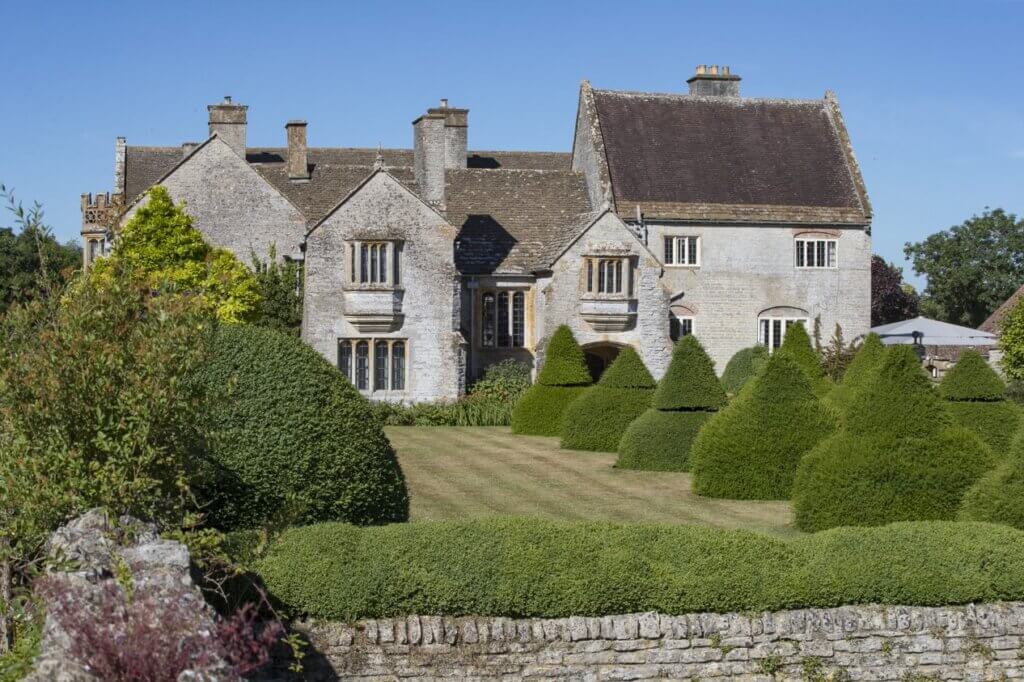Endangered bee gets a foothold in Somerset
- Lytes Cary designated as one of only two exemplary sites for the Shrill carder bee in England
- Bee is a priority species due to the huge losses of flower rich habitats since the 1950s
- National Trust volunteers, staff and farm tenants have worked together to make a safe haven and provide precious nectar-sources for the bees
- National Trust working to restore flower-rich grasslands, 97 per cent of which have been lost in the past 70 years
The National Trust’s Lytes Cary Manor and estate in Somerset has been designated as one of two exemplary sites in England for the endangered Shrill carder bee.

The other site where the bee is doing well is the RSPB’s Rainham Marshes site in Essex.
The bumblebee is a priority species for conservation in England and Wales following significant declines since the 1950s.
Once widespread across southern England and Welsh lowlands, with localised populations in central and northern England, the species is now nationally scarce with populations restricted to five isolated locations in southern England and south Wales.
Like many of our bumblebees, numbers of this small, straw coloured bumblebee with distinctive black stripes, have suffered due to the huge losses of flower rich habitats since the end of the second world war.

The award, by the Bumblebee Conservation Trust and Buglife, recognises almost a decade of work from National Trust volunteers, staff and farm tenants at the 146 hectare (361 acre) mixed farming estate.
Named after its high pitched buzz, the charismatic Shrill carder bee is part of our natural heritage and along with other species provides crucial pollination for crops that were conservatively valued at £430M by the UK National Ecosystem Assessment.
Sinead Lynch, Conservation Manager at the Bumblebee Conservation Trust, said: “With the National Trust being one of the largest landowners of flower-rich grasslands, its involvement is crucial for the conservation and recovery of the species.
Choosing champion sites in our ‘Back from the brink Shrill carder bee recovery project’ helps to highlight and celebrate where the species are doing well and gives us great case studies to help people to learn about the positive management of the species which in turn helps to secure its long term future.”
With 97 per cent of flower rich grasslands lost over the past 70 years including the wildlife, culture and history they sustained, the National Trust has had a particular focus since 2015 on restoring priority habitats such as flower rich meadows to our countryside, crucial for pollinators and the wildlife they support.
To date the conservation charity has created over 1,000 hectares (2,471 acres) of flower rich grasslands as part of its strategy for nature’s recovery that will be key to reversing the fragmentation of wildlife rich habitat in the countryside and mitigating the impacts of climate change.
Mark Musgrave, the National Trust’s Lead Ranger at Lytes Cary Manor says: “The work we did with volunteers included the planting out of hundreds of plugs of white dead nettle and comfrey by volunteers.
We have been propagating white dead nettle as it’s an important nectar source for adult bees. Over the winter our volunteer planted hundreds of white dead nettle and comfrey as well as a mixture of wildflowers from seed which will act as a wider source of nectar and pollen for foraging worker bees, including yellow rattle and black knapweed.
We are looking at places where we can plant more comfrey, another fantastic nectar source, and will be protecting key sites with flowers known to be good for the bees.”
John Butler who has been a volunteer at Lytes Cary Manor since 2012 said: “It has been a fantastic project to be involved with. I really hope this work will inspire others to play their part.”

- Ends –
The comment on white dead nettle, reminds me how seasons differ. We have good big areas of white dead nettle in the laundry field but this year it barely reaches above ankle height whereas normally it’s somewhere around your knees. Here on the sandy Suffolk coast the very wet winter didn’t encourage much root growth so when the weather switched over to bright blue skies and strong cold northerly winds for weeks this desiccated everything and the roots could not cope.
The stinging nettles are also short
There are few scents in the garden and I think generally there must be a lack of nectar.
Reading the Carder Bee requirements, I wonder if a significant factor in its demise is it use of tussocky grass for nesting in, something that is commoner in derelict sites.
This website gives its distribution.
https://species.nbnatlas.org/species/NHMSYS0000875593